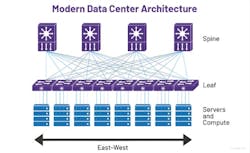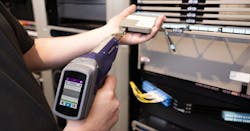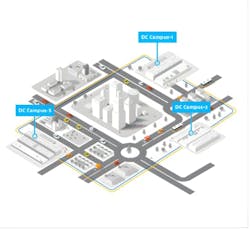High-Density and advanced fiber technologies for ICT installations
Key Highlights
- Modern data centers require multi-fiber, high-capacity cabling systems to support escalating bandwidth demands up to 1.6T per link.
- Automated multifiber inspection, polarity verification, loss testing, and advanced OTDR are essential for ensuring fiber integrity and performance at scale.
- Data center interconnects utilize DWDM and coherent optics for long-distance, high-speed links, with precise fiber characterization critical for maintaining signal quality.
- Hollow-core fiber technology offers significantly lower latency and new opportunities for cost-effective deployment, though it challenges traditional testing methods.
- Workflow automation, real-time data management, and AI integration enhance installation quality, reduce human error, and streamline certification processes in fiber network deployment.
Modern networks, particularly in advanced settings such as data centers, 5G networks, and edge computing environments, demand compact, high-capacity cabling systems to support escalating bandwidth requirements.
To achieve the required 800G and 1.6T data rates, transceivers use multiple lanes of parallel optical transmission that operate at either 100G or 200G per lane.
This architecture requires multi-fiber connectors, driving a sharp increase in fiber runs and trunk cables compared with earlier generations. For example, a single 800G-SR8 link implements eight lanes and 16 fibers for a full duplex transmission. At scale, this involves tens of thousands of fiber connections in modern data centers, with the largest hyperscalers approaching hundreds of thousands.
Using a spine-leaf topology that supports east-west traffic patterns, data centers enable non-blocking, high-bandwidth communication between compute nodes, which is vital in distributed computing and AI workloads.
Each leaf switch connects to every spine switch, and traffic between any two servers may traverse multiple hops, increasing the demand for high-density, low-latency optical links.
These evolutions introduce new challenges for installation and testing, including the need to maintain endface cleanliness across all fiber channels, verify polarity and continuity in complex multi-fiber paths, and perform simultaneous loss and reflectance measurements across multiple lanes.
High-density fiber test methodologies
To address these challenges, modern test methodologies emphasize automation and comprehensive validation, with four key techniques: automated multifiber inspection, polarity and fiber mapping, loss testing, and multifiber OTDR.
Automated multifiber inspection employs a probe microscope that can scan, analyze, and deliver pass/fail results for every fiber in a connector within seconds, ensuring compliance with industry standards through fully automated configuration, inspection, and analysis. These systems have traditionally relied on inspection algorithms, but the increasing fiber density now requires probes to integrate AI for the precise identification of individual fibers.
Polarity and fiber mapping are verified by automated functions embedded in OLTS or multifiber OTDR systems, providing end-to-end validation of polarity and fiber assignment across trunk cables and patch panels, thereby preventing costly late-stage remediation.
Loss testing is accelerated through true multifiber OLTS, which performs simultaneous measurement of insertion loss, length, and polarity across all fibers in a connector in seconds, eliminating the need for individual fiber handling and dramatically shortening certification workflows.
And finally, multifiber OTDR has been adapted for ultra-high-fiber count cables (such as those with 6,912 fiber cores) and is used alongside the above techniques to enable sequential or parallel characterization of all fibers without manual reconnection or reliance on fanout cables.
As fiber networks grow in complexity and scale, test automation and workflow optimization are becoming essential to ensure consistency, reduce human error, and enforce best practices during installation. Workflow-optimized solutions help standardize test procedures across contractors, teams, and sites, ensuring uniform quality regardless of technician experience. They automate pass/fail analysis based on pre-configured thresholds and guide technicians step-by-step through test sequences to improve first-time-right rates and ensure compliance with method of procedures (MoPs).
Real-time data management enables instant uploads to a centralized cloud platform for remote validation and faster project sign-off, while integration with asset and project management systems streamlines documentation and compliance. Additionally, trend and anomaly analysis support predictive maintenance and continuous improvement. This level of automation and data integration not only accelerates deployment but also enhances the reliability and traceability of fiber installations…making it a must-have for data center infrastructures.
Data Center Interconnect
As data center speeds rise and the geographic distribution of campuses increases, data center interconnect (DCI) architectures need to evolve. This means high-speed, low-latency links to enable compute, storage, and networking resources to operate as unified clusters that optimize workload distribution across multiple sites.
Outside plant deployments prioritize fiber efficiency and long-distance reach, so they will typically use duplex LC connectors with DWDM and coherent optics. Multiplexing multiple wavelengths onto a single strand reduces fiber count but increases system complexity and cost due to advanced transceivers and modulation schemes.
Precise fiber characterization over these long distances becomes critical, and endface cleanliness must be ensured. This is particularly true for amplified links, where contamination would raise reflectance and degrade signal quality, as well as risk damage to transceivers. Bi-directional insertion loss and optical return loss measurements verify the link budget and maintain signal integrity, with DWDM and coherent systems requiring tight loss budgets to prevent laser destabilization, increased bit error rates, or transceiver failure.
The key impairments, chromatic dispersion (CD) and polarization mode dispersion (PMD), must also be fully characterized, with accuracy ensuring DCI links can support current and future speeds. And, while coherent transceivers can compensate via digital signal processing, excessive dispersion increases latency, OSNR penalties, and error correction overhead.
Hollow Core Fiber emerges
Recent years have seen the development and first implementations of hollow-core fiber technologies (HCF), which offer significantly lower latencies and are being used for financial trading, quantum communication, and AI-driven high-performance networks.
The London Stock Exchange’s 2021 deployment was reportedly the first such deployment and announcements stated the fiber technology was 30% faster than existing fiber routes.
Furthermore, it presents opportunities for cost optimization and deployment in strategic remote locations, where hyperscalers are increasingly building infrastructure as these sites have better access to power, cooling, and connectivity, even if that comes at the cost of being more distant from traditional data center clusters.
HCF uses a different (non-nested, double anti-resonant nodeless) structure (NDANF) to traditional fiber optics used in data centers, with light passing through an air-filled core to not only cut latency but also non-linear effects.
The rise of HCF does, however, present a challenge for testing as its low backscatter levels can limit the effectiveness of conventional OTDR testing.
New test methodologies are needed and advanced OTDR variants are in development that enable HCF to scale beyond niche deployments and be certified with the same confidence as traditional fiber.






